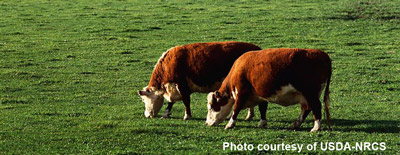February 2015
 Spring is right around the corner and many producers with cool season grass pastures, especially in central and eastern Nebraska are evaluating whether or not to fertilize this year. In many parts of Nebraska there is adequate soil moisture in place to provide a good start to the growing season. Assuming average spring moisture, the outlook is positive for grass growth.
Spring is right around the corner and many producers with cool season grass pastures, especially in central and eastern Nebraska are evaluating whether or not to fertilize this year. In many parts of Nebraska there is adequate soil moisture in place to provide a good start to the growing season. Assuming average spring moisture, the outlook is positive for grass growth.
Grass prices have risen rapidly the last several years as pastures are in short supply. Fertilizer prices have also decreased from their highs a few years ago. These conditions may encourage producers to be thinking how they might capture more forage production from their pastures. University of Nebraska Extension Forage Specialist Bruce Anderson recommends producers consider not only fertilization, but also their grazing system when evaluating the use of fertilizer on pastures.
To make pasture fertilization pay, you have to efficiently capture the extra forage growth that occurs. If a pasture is fertilized in the spring and then continuously grazed throughout the rest of the growing season much of the additional forage growth is wasted by the cattle through trampling, bedding, and fouling. In this type of grazing scenario, approximately only a third of the additional grass growth from fertilization is actually consumed by the cattle.
A time-controlled grazing system with at least four paddocks or cells in a pasture provides producers the opportunity to more effectively manage how grass is grazed. Cattle are given access to only a fourth or less of the grass in each pasture at a time. When the cattle have grazed about half of the growth, they are then moved onto the next paddock. The use of a time-controlled grazing system allows grass to regrow and recover before being grazed again and improves forage utilization through reducing trampling and fouling.
Dr. Anderson also recommends that producers consider only fertilizing half to three-fourths of their pastures early in the spring. In mid-May if it looks like there will be adequate moisture for additional grass growth, fertilizer can be applied to those pastures that weren't fertilized early, but were grazed to produce additional grass regrowth for grazing in July and August.
Dr. Bruce Anderson has co-authored a NebGuide Fertilizing Grass Pastures and Hayland (PDF version, 711KB) that provides additional information on fertilizer rates and management for grass pastures.
Aaron Berger
Extension Educator
Panhandle Research & Extension Center
University of Nebraska